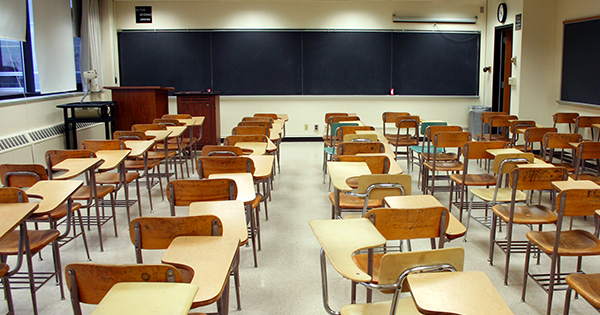
You don’t become a pundit because of non-controversial ideas. In his interview with The Atlantic, University of Tennessee Professor of Law and Instapundit blogger Glenn Harlan Reynolds offers his opinions on the American educational landscape from kindergarten through university. Yes, this is an interview, not an article — yet he still provides no support for his ideas, and his statements are misinformed, misguided, and misleading. He diagnoses two completely different problems in the US educational system (1) faculty incompetence and stale methodology at the K-12 level, and (2) rising costs at the postsecondary level. I won’t argue with him about the latter; aside from online instruction, though, Reynolds has little advice for American colleges and universities in this interview. Here are two points (wrongheaded in my opinion) that he makes regarding K-12.
1. Vouchers and charter schools are a “better” choice than traditional public schools.
Studies that show charter students outperforming public school students also indicate (explicitly or implicitly) that charter schools set a barrier to entry. That is, while a public school is required to accept every eligible child, a charter school can and does discriminate on the basis of intellectual ability, whether through entrance exams or past academic performance. This is not about teaching, teachers, or schools; this is about ability grouping. That can be done in a traditional public school environment, without disrupting current methods. It is misleading to suggest that only “innovative” schools are able to challenge students.
Because he offers no evidence in the interview for his comments about “big school districts … hemorrhaging students” due to the poor quality of instruction, I can’t comment on that until I have read his book. There are many non-academic reasons a parent may wish to change schools or homeschool: violence, bullying, values (e.g., religious education), and child anxiety or health issues are only a few examples. However, a 2013 survey, conducted by the Associated Press and NORC reports that in a random sampling, US parents are very satisfied with their child’s education. A majority of those surveyed thought the quality of education in their local school district was “good” or “excellent”.
2. Homeschooling, particularly via online courses, is the best way to overcome the incompetence of current teachers.
To support this example, Reynolds offers an anecdote about his daughter, who took intensive online courses, studying “a year’s worth of work … in three weeks” at one point. He finds this superior to the sluggish pace of public school instruction. I am not one to argue that all students learn at the same rate; there are substantial intellectual benefits to ability-grouping students at certain levels of their education (the latter point is quite important). However, almost a decade of teaching experience in higher education, as well as observation of peers before that, has shown me without exception that intensive (as in single-focused, short-term) study is not conducive to learning. Yes, the work will get done. No, you will not remember it next year. This is why cramming doesn’t work: because learning occurs through active use, reuse, and consolidation – which requires repetition.
There may be a lot of different ways to teach children, as Reynolds argues. Not all of them are good. He’s ignored the disappearance of many less-good practices that once appeared in 19th century American classrooms, such as physical punishment and public humiliation, to suggest that our current classrooms are the same as our forefathers’. And yet many of the practices of the maligned one-room schoolhouse strongly support well-regarded educational theory: having stronger (older) students consolidate skills and build confidence by teaching the younger; contributing to the broader school community through service (such as fetching the water); and ‘boring’, rote repetition – which, while I would not use it in isolation, remains an effective mnemonic tool.
Reynolds’ book promises that “the Information Age will save American education from itself”. But the system he’s putting forward here will, in effect, splinter education, allowing those with better preparation to continue to excel. He has no solution to offer those whose parents can’t support homeschooling, can’t afford high-speed internet access, or children who can’t make the cutoff of a charter school. In other words, Reynolds wants to separate the relatively wealthy from the relatively poor. This is a new system of segregation, based not on race, but on income and educational background.
About the Author: Jaclyn Neel is a visiting Assistant Professor in Ancient History at York University in Toronto, Ontario.